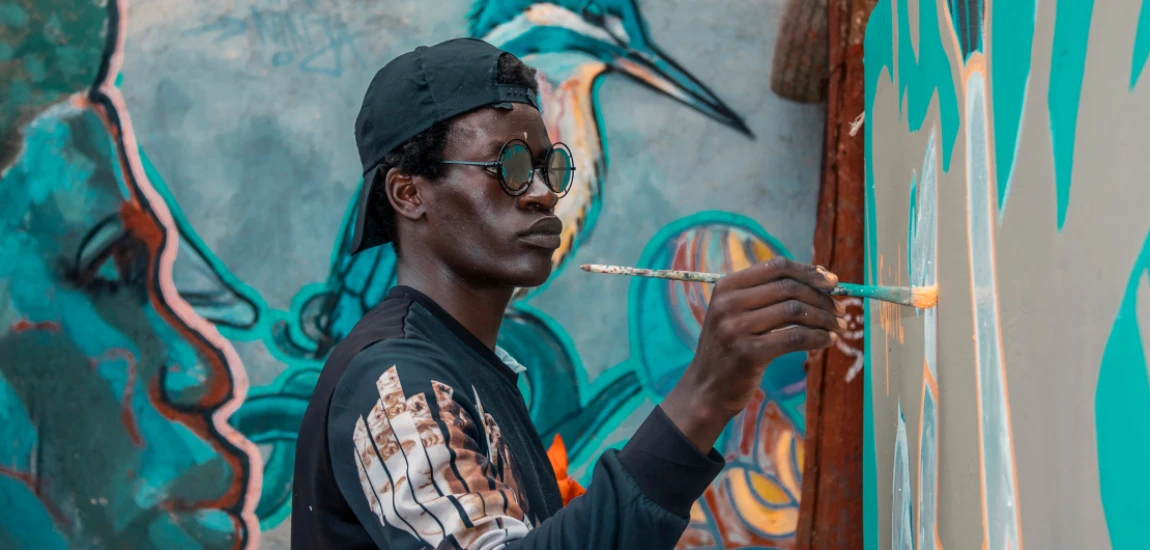Why Every Artist Is Releasing a ‘Visual Album’ (And What It Really Means)

The way we consume music has changed dramatically over the past two decades. Once upon a time, an album was enough—vinyl, cassette, or CD, accompanied by a booklet of lyrics and cover art. Then came the MTV era, when music videos became the ultimate promotional tool, defining entire generations of pop culture. Fast forward to today, and the visual album has become the gold standard for how major artists release their work. From Beyoncé’s groundbreaking Lemonade to Billie Eilish’s cinematic rollouts, artists are no longer just releasing songs; they’re curating entire visual experiences. But why now? What does it mean for the music industry, and how is it shaping the way fans interact with art? Let’s explore why every artist is suddenly embracing the visual album—and why it matters more than you might think.
The Origins of the Visual Album: From MTV to Beyoncé
The term “visual album” may sound new, but the concept has roots stretching back decades. In the 1980s, MTV revolutionized music consumption by pairing audio with visuals. Michael Jackson’s Thriller wasn’t just a hit song; it was a cinematic short film that changed how artists thought about storytelling. Prince, Madonna, and David Bowie all leaned into performance-driven videos that blurred the line between music and cinema.
Fast forward to 2013, and Beyoncé changed the game by dropping her self-titled album on iTunes without warning, complete with music videos for every track. That moment is often credited with redefining the visual album as more than just a collection of videos—it was a cohesive storytelling medium that fans consumed as one immersive piece. Beyoncé’s Lemonade in 2016 pushed this even further, weaving together themes of infidelity, Black womanhood, and resilience through striking visual imagery. Suddenly, the visual album wasn’t just a marketing tool—it was art in its own right.

Why Artists Are Turning to Visual Albums in the Streaming Era
Today’s music ecosystem is dominated by streaming platforms like Spotify, Apple Music, and YouTube. With millions of tracks available at our fingertips, attention spans are shorter than ever. That’s where the visual album comes in. By offering a cinematic layer to their work, artists can command more attention and create cultural “moments” that stand out in the sea of releases.
Visual albums also thrive in the age of social media. Clips from videos become instantly shareable on TikTok and Instagram, fueling virality in a way that audio alone often cannot. For younger audiences raised on a steady diet of Reels and YouTube shorts, music without visuals almost feels incomplete.
There’s also an economic angle: platforms like YouTube pay for views, and visual albums provide a second revenue stream. For artists, the visual album isn’t just an artistic endeavor—it’s a smart business move. It makes the music harder to ignore, harder to forget, and easier to market.

Visual Albums as Storytelling Tools
Beyond marketing, the visual album is becoming a storytelling tool in its own right. Music has always been about narrative—whether it’s a heartbreak ballad or a political anthem—but visuals add a new dimension. When paired with striking cinematography, choreography, and symbolism, an album becomes something closer to a film.
Take Billie Eilish’s When We All Fall Asleep, Where Do We Go?. Each video wasn’t just a standalone clip; together, they created a surreal horror aesthetic that mirrored the themes of the music. Similarly, Janelle Monáe’s Dirty Computer wasn’t just an album but a sci-fi “emotion picture” that explored themes of identity, sexuality, and freedom. These examples show how visual albums transform listening into a multisensory experience.
The medium also allows artists to control their own narratives. In an era where fans and critics dissect every lyric and post online, a visual album provides a way to set the tone and context for the work. It’s not just about telling fans what the song means—it’s about showing them.

How Technology Is Fueling the Trend
The rise of visual albums wouldn’t be possible without today’s technology. High-quality cameras are cheaper, editing software is more accessible, and streaming platforms are optimized for video. Where once only major-label artists could afford full-scale productions, independent musicians now have the tools to experiment with visual storytelling.
TikTok and Instagram Reels have also created a culture where visuals drive discovery. A catchy hook paired with a striking clip can catapult a song into viral fame. This feedback loop pushes artists to invest more in visuals upfront, knowing that one iconic moment can make or break a release.
Even the way fans consume content is shifting. Many now watch albums like films, streaming entire visual projects on platforms like YouTube. The boundary between music, film, and social content is dissolving, creating a hybrid medium that’s uniquely suited to the digital era.

The Cultural Impact of Visual Albums
The visual album isn’t just a music industry trend—it’s reshaping pop culture. By merging the worlds of music and cinema, it creates shared cultural moments that fans rally around. Beyoncé’s Lemonade wasn’t just an album; it was a political, cultural, and artistic statement that sparked think pieces, Twitter debates, and even academic studies.
Visual albums also highlight the growing demand for authenticity and artistry. Fans want more than disposable singles—they want immersive experiences that feel intentional and meaningful. In this sense, the visual album has become a counterweight to the fast-paced, playlist-driven culture of streaming. It asks fans to slow down, watch, and engage deeply with the art.
At the same time, the format democratizes creativity. Independent artists use visual albums to stand out in a crowded market, while global superstars use them to solidify their cultural dominance. It’s a format that works at every level of the industry, making it more than just a passing fad.

Tips for Artists: How to Make a Visual Album Work
For musicians considering the visual album route, success isn’t just about budget—it’s about strategy. Here are some actionable insights:
Tell a Story: A visual album works best when it has a narrative arc or central theme. Don’t just make a string of videos—make a journey.
Think Platform-First: Design your visuals with TikTok, YouTube, and Instagram in mind. Break your videos into shareable clips.
Collaborate with Filmmakers: Partner with emerging directors and cinematographers to bring fresh perspectives to your work.
Leverage Symbolism: Visuals can communicate complex emotions and messages that lyrics alone may not. Use them wisely.
Prioritize Cohesion Over Budget: You don’t need millions to make an impact—cohesive aesthetics and strong concepts often resonate more than flashy production.




